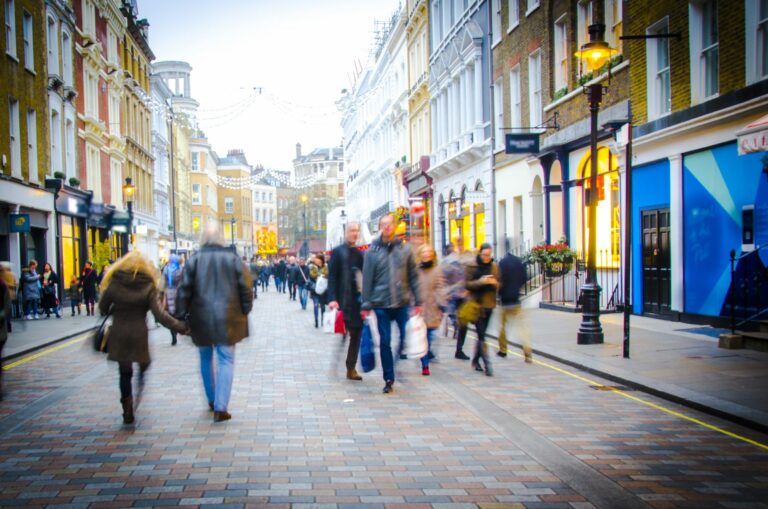Leading property agent Savills has published its Spotlight report for shopping centres and the high street for Q1 of 2022, examining trends in consumer behaviour, the retail investment market, and high street investment.
Rising costs
The report hightled that UK households are facing a decline in real disposable incomes on a scale that hasn’t been seen since the WWII, predicting that this will negatively affect spending behaviour at a time when retailers are also facing ‘dramatic rises’ in their costs.
As a result, it said consumer confidence about the future ‘has collapsed to almost record lows’, and that Oxford Economics is forecasting that consumer spending will fall quarter on quarter for the rest of 2022, making it a recession in all but name.
The report said that spending on discretionary items and bigger ticket items are likely to see the largest falls, and bigger-ticket household items such as carpets, furniture and white goods will see falling sales.
On the leisure sector, it predicted on the basis of past downturns that people are less inclined to cut back on leisure or pleasure as much as they could and that spending in some segments should hold up better than might have been expected.
One area that might prove more defensive is DIY, with Kingfisher’s and Wickes’s recent statements appearing confident that people will carry on spending on their homes, and there is definitely some evidence from past downturns that DIY spend actually increases as people become more cost-conscious.
Rent increases
Average rents achieved in Q1 2022 were higher than those achieved in the last pre-pandemic year, with headline rents achieved were up 16.7% this quarter and net effective up 29.5%.
Looking ahead, Savills noted that while there have been a few recent announcements on large-scale expansion programmes, they expect caution to prevail against the background of rising operating costs and falling sales, which should mean that rents plateau for a while rather than continue to grow at their recent pace.
Shopping Centre Investment
According to there report, buyer confidence is building. Investment turnover in Q1 2022 was the strongest Q1 figure that we have seen since 2016. However, the £370m transacted in the first three months of this year was still well below the Q1 average of £847m since 1995.
Savills said: “As we commented upon in the last Spotlight, there are clear signs that the strong performance of retail warehousing last year is turning opportunistic investors’ eyes towards shopping centres. However, the overall tone of the first quarter of 2022 is one of lack of suitable product, which begs the question of why owners are unwilling to sell at the moment?
“As ever, this simple question has a variety of answers. Our view is that they all orientate around pricing. While there is investor appetite for the sector, the prices that they wish to pay for the larger and better quality schemes are still out of line with many vendor expectations. It seems odd to suggest that there hasn’t been enough distress in a sector that has seen seven years of falling prices, but some potential buyers are still hoping for more.”
High Street Investment
As more than £1.6bn traded over the last two quarters, Savills noted that the biggest change in purchaser profile over the last six months has been the return of income-focused investors who are hoping to call the retail and capital value cycle.
It said “While these buyer’s confidence will definitely be knocked by worsening consumer sentiment over the second quarter of 2022, we do not expect it to last long enough to drive a rise in retailer failure or voids, and as such the occupational confidence story that was driving this group at the start of 2022 should remain.
“This confidence should be boosted by the Q1 rent collection figures, which showed an 8.6% rise on the previous quarter.
“We expect that the main group of vendors of high street shops will remain the institutions, and the main buyers will be private investors.”


